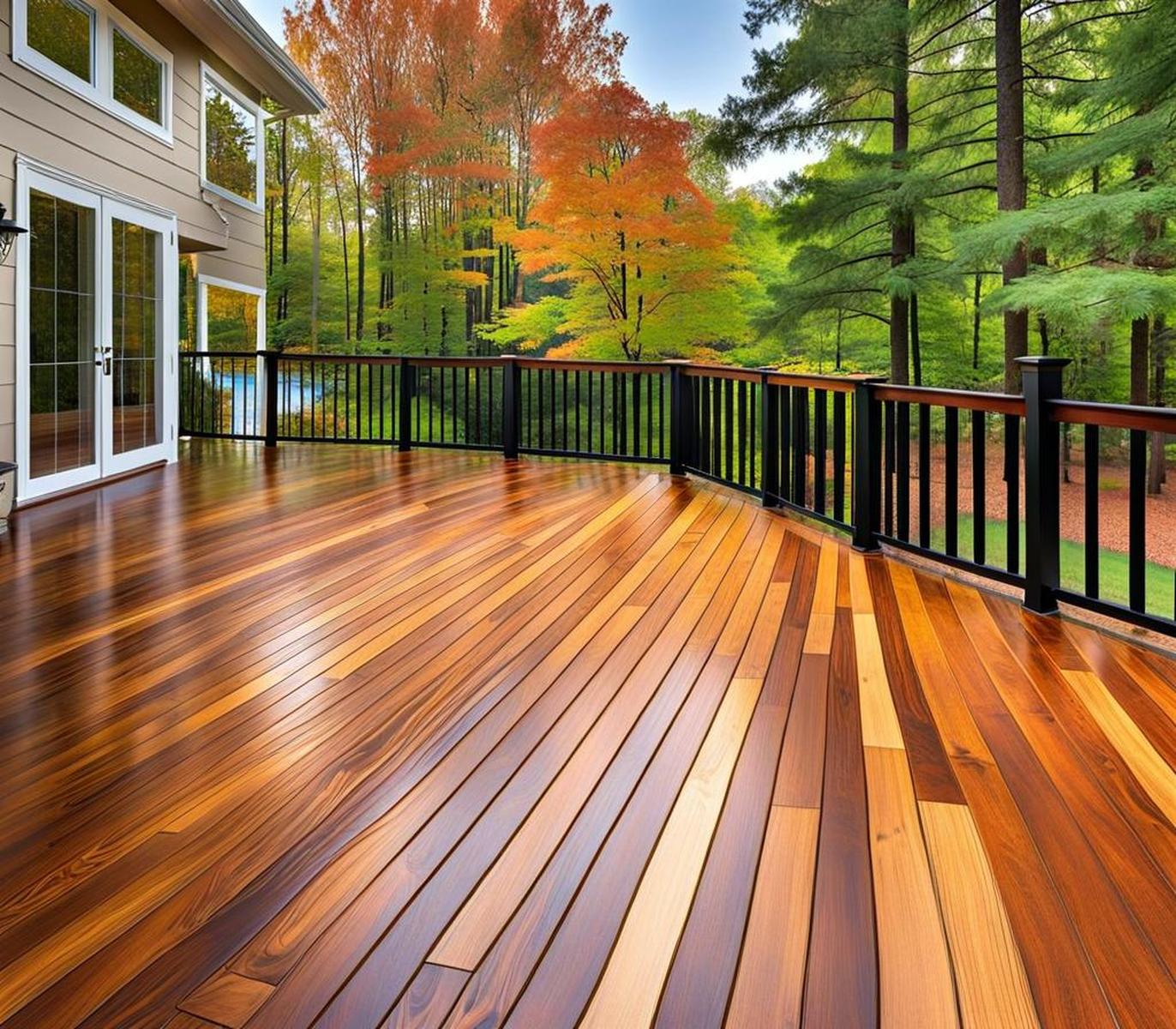Eager to add some protection and aesthetic appeal to your outdoor wood deck with a nice coat of penetrating stain? Hold those brushes! Before rushing into a staining project, it’s imperative your deck surface is fully cured and moisture-free. Otherwise, you risk peeling, blistering, and even early wood decay down the track.
So how dry should your deck really be? When exactly can you safely say it’s ready for staining? We recommend a simple barefoot test that clearly indicates readiness (more on that soon). First though, let’s explore why proper dry time is non-negotiable for flawless long-term staining results.
Why You Must Properly Dry Your Deck Before Staining
Staining over damp wood, whether fresh lumber or an existing surface, jeapordizes the finish in multiple ways:
- Trapped moisture prevents full penetration of stains into the wood, reducing protection and longevity
- Peeling and cracking can occur as stain dries at different rates over uneven moisture levels
- Dark uneven blotching appears on stained damp areas as they dry at different rates
- Future wood decay and discoloration happen faster in areas that didn’t properly dry prior
Therefore, waiting until your deck is thoroughly dry before staining saves money, disappointment and protects your investment long-term. But how do you definitively know when the right moisture level is reached?

How Dry Should My Deck Be?
According to wood finishing experts, your deck lumber should reach an equilibrium moisture content (EMC) between 12-15% before applying any protective finish like stains or oils. This indicates the cells have stabilized enough to open and allow maximum penetration.
For most regions, allowing 1-2 full dry days after power washing or cleaning your wood deck suffices to reach ideal drying, barring any heavy rainfall. Visually check across all areas of your deck to ensure there’s no standing puddles or visible moisture present before starting prep work.
Ideal Weather Conditions For Drying
To achieve moisture equilibrium fastest, aim to wash and dry your deck during weather meeting these ideal criteria:
- Daytime temperatures between 50-90degF
- Low relative humidity
- Overcast skies – no direct sunlight
- No chance of rain, dew or frost for 72 hours
Cooler temperatures and dense cloud coverage prevent rapid drying that seals deck cells before moisture escapes. Gentle airflow circulation also assists with moisture evaporation.
Connect Drying Time With Your Deck Stain
Another factor impacting dry times is whether you choose an oil-based or water-based deck stain product. Oil-based stains take substantially longer to fully cure and dry compared to water-based versions.
So if your preferred stain contains oils or solvents, allow 50% more drying time for your deck beforehand. Your stain tin should state specifically how long the product takes to dry too. Account for this when planning your project.
Testing If Your Deck is Actually Dry Enough
Visually checking your wood may not be enough to determine if moisture levels are truly safe for staining. After proper drying time has passed, we strongly advise conducting these quick tests first:
The Touch Test
Walk your deck and touch various areas, feeling with your whole hand for any dampness or coolness indicating excess moisture. Pay special attention to hidden undersides and vertical grooves that can conceal unseen moisture longer. All areas should feel uniformly dry across the entire surface before moving ahead.
The Walk Test
For us, this reliable test is the best way to clearly confirm when your deck is ready for staining. Simply walk barefoot on a small inconspicuous section of deck, feeling if residue or tackiness is picked up on your feet. If stain were applied now, this would lead to stickiness between coats.
You’ll know moisture has sufficiently escaped once walking across the boards leaves zero noticeable residue or heel prints behind. Definitely wait if staining inside your feet proves iffy; allowing extra dry time avoids poor adhesion issues down the track.
How Rain Impacts Your Almost-Dry Deck
Frustratingly, Mother Nature doesn’t stick predictably to weather bureau forecasts. If ambient humidity or sudden rainfall soak your deck before staining commences, further drying is needed before progressing.
Any pooled moisture or humidity exposure once partially cured stain is present will forever create unsightly discolored blotching and uneven sheen. Carefully check boards for white stains or inconsistencies after any damp weather too.
When large stubborn spots appear, lightly sand affected areas and apply supplemental stain to blend sheens after the surface fully dries again. Avoid leaving bald patches open to water damage.
Plan Staining For Ideal Dry Weather
For the most flawless professional quality finish, ensure weather conditions remain optimal for at least the first 24 hours as your chosen deck stain initially cures.
Avoid staining late in the seasons when tenacious early morning dew and big temperature swings happen. Be extra patient for timber to properly dry if staining during transitional periods. Rushing timelines invariably leads to lackluster staining outcomes.
When in doubt over precise moisture content or confusing manufacturer instructions, consult a reputable professional painting contractor instead. Seek their qualified assessment on if deck stain or sealer should be delayed, plus any necessary surface preparation.
Specialist painters own professional-grade moisture meters able to accurately pinpoint if deck MC is within approved ranges across all areas. This takes the guesswork out of the equation for stressed DIYers worried about making expensive mistakes.
In summary, investing some additional forethought into properly drying your exposed wood before staining saves much frustration and wasted expense later. Waiting patiently also leads to longer lasting protection and enriching natural wood tone. Our tried barefoot test indicates clearly when the deck is truly ready for your ideal stain application.
